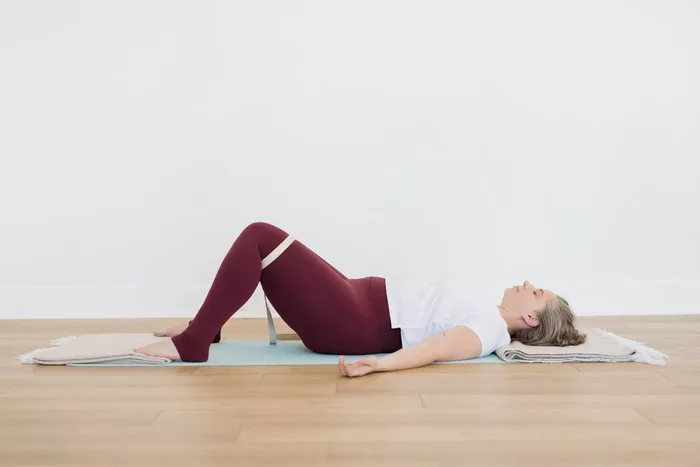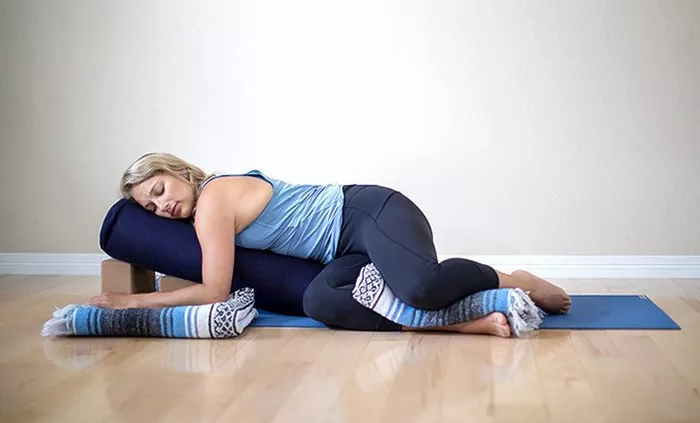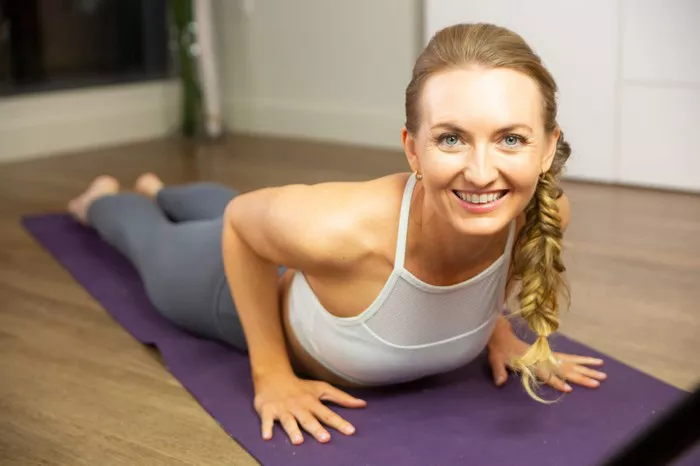The quest for effective weight loss methods has led many to explore unconventional tools in fitness routines. Among these tools, the yoga ball—also known as a stability ball, Swiss ball, or exercise ball—has gained popularity not only for core strengthening and flexibility training but also as a potential aid for weight loss. But can this inflatable sphere truly support your weight loss journey? This article delves into the science and practicality of using yoga balls for weight loss, guiding you through their benefits, best practices, and common misconceptions.
What Is a Yoga Ball?
A yoga ball is a large, inflatable ball made of soft elastic material, designed to support a variety of exercises that improve balance, strength, flexibility, and posture. They typically range in size from 45 cm to 85 cm in diameter and are used in homes, gyms, and rehabilitation centers. Yoga balls are often seen in physical therapy environments and are also used in Pilates and yoga workouts to engage the core muscles more deeply.
Unlike rigid workout equipment, yoga balls introduce an element of instability. This instability requires the body to engage multiple muscle groups simultaneously in order to maintain balance. As a result, yoga balls can enhance the intensity and effectiveness of a wide range of exercises, particularly those targeting the core.
How Yoga Balls Contribute to Weight Loss
1. Increased Caloric Burn Through Active Sitting
Many people use yoga balls as a replacement for their office chairs. This practice, known as “active sitting,” promotes constant, low-intensity muscle engagement. The minor movements required to stay balanced on the ball activate the core, back, and leg muscles throughout the day.
While the number of calories burned may not be comparable to a high-intensity workout, the cumulative effect over weeks and months can be beneficial:
- Improved posture and muscle tone
- Reduced risk of sedentary behavior-related weight gain
- Better engagement of the abdominal and lumbar regions
Though this is not a standalone weight loss method, it complements a healthy lifestyle.
2. Enhanced Core Strength and Stability
Many exercises performed on a yoga ball directly target the core muscles. These include abdominal crunches, planks with the feet on the ball, and rollouts. A stronger core contributes to better overall functional fitness, posture, and endurance.
The indirect benefits of a strong core include:
- Improved exercise performance in cardio and weightlifting workouts
- Reduced likelihood of injury
- Enhanced metabolism due to increased muscle mass
These factors collectively support long-term weight management efforts.
3. Integration into Cardio and Strength Workouts
Though yoga balls are typically associated with stretching and balance, they can be incorporated into dynamic workouts to increase intensity. When paired with strength training or aerobic routines, they raise the level of muscle activation and coordination.
Here are some ways yoga balls can be integrated into higher-intensity routines:
- Ball Squats: Performing squats while leaning against a yoga ball on the wall improves form and activates stabilizing muscles.
- Mountain Climbers with Hands on Ball: This variation increases balance demands and elevates heart rate.
- Ball Slams (with weighted balls): Although different from traditional yoga balls, this technique involves explosive movement, which boosts calorie expenditure.
Types of Exercises Using Yoga Balls for Weight Loss
To effectively use yoga balls for weight loss, you can perform a variety of exercises. These workouts should be part of a consistent fitness routine and complemented by proper nutrition and hydration.
Core Workouts
Ball Crunches
Lie on the yoga ball with your lower back supported. Cross your arms over your chest or place your hands behind your head, and perform slow, controlled crunches.
Plank with Feet on Ball
Position your shins on the ball and place your hands on the floor in a plank position. Maintain your balance as you hold the position for 30–60 seconds.
Knee Tucks
From a plank position with feet on the ball, roll the ball toward your chest by bending your knees, then return to the starting position.
Lower Body Exercises
Wall Squats with Ball
Place the yoga ball between your lower back and a wall. Perform squats while pressing against the ball, which rolls with your motion.
Hamstring Curls
Lie on your back with your heels on the ball and lift your hips. Curl the ball toward your glutes using your feet, then return to the starting position.
Upper Body and Full-Body Movements
Push-Ups with Feet on Ball
Perform push-ups with your feet resting on the ball, which forces your core and arms to stabilize your body.
Ball Passes
Lie on your back holding the ball above your head. Raise your arms and legs, passing the ball from your hands to your feet, then lower both slowly.
Jump Squats with Ball Raise
Hold the ball overhead, perform a jump squat, and raise the ball as you leap to intensify the workout.
Pros and Cons of Using a Yoga Ball for Weight Loss
Like any fitness tool, yoga balls have both advantages and limitations. Understanding these can help you use them more effectively and safely.
Pros
- Affordable and Portable: Yoga balls are inexpensive and can be deflated for travel or storage.
- Low Impact: Suitable for people with joint issues or those recovering from injury.
- Multi-functional: Can be used for strength, flexibility, balance, and even relaxation exercises.
- Engages Multiple Muscle Groups: Enhances the effectiveness of basic exercises.
- Improves Posture and Stability: Regular use contributes to better spinal alignment.
Cons
- Not High-Calorie Burners Alone: On their own, yoga balls don’t create a significant calorie deficit.
- Learning Curve: Exercises can be difficult for beginners due to balance challenges.
- Limited Resistance: Without additional equipment like weights or resistance bands, muscle gain may plateau.
- Potential for Injury: Improper use can lead to falls or strains, especially for those with poor balance.
Who Should Use a Yoga Ball for Weight Loss?
Yoga balls can be used by a wide range of individuals, but their effectiveness depends on the user’s fitness level, goals, and how the ball is integrated into a broader workout plan.
Ideal candidates include:
- Beginners looking to ease into exercise
- Office workers wanting to increase movement during the day
- People recovering from injury (under supervision)
- Individuals focused on core strength and posture
However, those seeking rapid or intense weight loss might need to incorporate other forms of cardio and resistance training to meet their goals more efficiently.
Best Practices for Safe and Effective Use
To maximize results and minimize the risk of injury, consider the following tips when incorporating a yoga ball into your routine:
1. Choose the Right Size
Ball size is determined by your height:
- Under 5’1″ → 45 cm
- 5’1″–5’7″ → 55 cm
- 5’8″–6’1″ → 65 cm
- Over 6’2″ → 75–85 cm
Your knees should be at a right angle when sitting on the ball.
2. Maintain Proper Form
Balance-based exercises require focus. Poor form can lead to strain or ineffective workouts. Start slow, and use support (like a wall or sturdy chair) until you’re confident in your balance.
3. Incorporate Progressive Overload
To stimulate weight loss and muscle growth, gradually increase exercise difficulty by:
- Adding reps or sets
- Using weights alongside the ball
- Reducing rest time between exercises
4. Combine with Other Modalities
For optimal results, integrate yoga ball workouts with:
- Cardiovascular exercise (e.g., walking, running, cycling)
- Strength training with dumbbells or bodyweight
- Flexibility routines to aid recovery
Yoga balls enhance these modalities but should not replace them entirely.
Common Myths About Yoga Balls and Weight Loss
Despite their growing popularity, there are several misconceptions surrounding yoga balls. Let’s address some of the most common myths.
Myth 1: Sitting on a Yoga Ball All Day Will Make You Lose Weight
Fact: While active sitting may slightly increase calorie burn, the difference is minimal. It’s beneficial for posture and core engagement but not a primary weight loss solution.
Myth 2: Yoga Ball Workouts Are Only for Women or Beginners
Fact: Yoga balls are used in elite athletic training for stability and injury prevention. They can be adjusted to suit all levels of fitness and genders.
Myth 3: Yoga Balls Can Replace All Other Forms of Exercise
Fact: No single tool can offer the benefits of a comprehensive workout routine. Yoga balls are most effective when used in conjunction with other exercises.
How Long Does It Take to See Results?
As with any fitness approach, results depend on consistency, diet, intensity, and individual metabolism. However, if a yoga ball workout is part of a well-rounded program, users can expect to see improvements in balance, posture, and muscle tone within 3–4 weeks. Noticeable fat loss may require 6–12 weeks, depending on other lifestyle factors.
To track progress effectively:
- Measure waist circumference, not just weight
- Monitor strength gains and flexibility
- Take photos every few weeks
Conclusion
In conclusion, yoga balls can be a valuable tool for those seeking to enhance their fitness routines, especially in terms of core strength, posture, and overall body awareness. While they are not a magic bullet for weight loss, when combined with a comprehensive exercise plan and healthy diet, they can contribute meaningfully to your goals.
Related Topics:



















